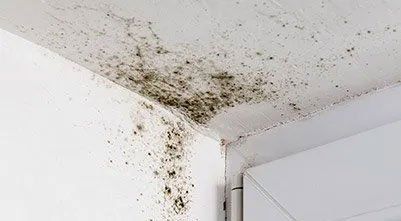Mold growth in an apartment can cause serious health issues, especially for individuals with respiratory conditions or allergies. If you suspect mold, testing is the first step in identifying the problem and finding a solution. This guide explains how to check for mold, when to seek professional help, and how Fraser Bond can assist property owners and landlords in addressing mold issues.
1. Signs of Mold in an Apartment
Mold is not always visible, but some common signs indicate its presence:
- Musty or damp odour
- Visible black, green, or white spots on walls, ceilings, or furniture
- Water stains or discoloration on walls and ceilings
- Persistent allergies or respiratory issues, such as coughing, sneezing, or headaches
- Increased humidity or condensation on windows and walls
If any of these signs appear, testing for mold is recommended.
2. How to Test for Mold in an Apartment
Method 1: Visual Inspection
- Check for mold growth in damp areas, such as bathrooms, kitchens, basements, and around windows.
- Look behind furniture, inside cupboards, and under carpets where moisture may accumulate.
Method 2: Smell Test
- If you detect a persistent musty odour, mold may be present even if it is not visible.
- Try identifying where the smell is strongest, as it often indicates the source of mold growth.
Method 3: DIY Mold Test Kits
You can purchase mold test kits from hardware stores like B&Q or online retailers like Amazon. The three main types include:
- Surface Test: Use a swab to collect samples from suspected mold spots and compare results using a test strip or send it to a lab.
- Air Quality Test: These kits measure airborne mold spores by capturing samples over a period of time.
- Petri Dish Test: Place a petri dish in the apartment and leave it open for 24-48 hours to collect mold spores.
Method 4: Professional Mold Inspection
If the mold problem is severe, or if you suspect hidden mold behind walls or under flooring, a professional inspection is recommended. Mold specialists use infrared cameras, moisture meters, and air quality tests to detect hidden mold.
3. What to Do If You Find Mold
If you confirm the presence of mold, take the following steps:
- Identify the Cause: Mold is often linked to leaks, poor ventilation, or high humidity. Fixing these issues is essential.
- Clean Small Mold Patches: Use a mild detergent, white vinegar, or a mold removal spray to clean minor mold spots.
- Improve Ventilation: Open windows, use dehumidifiers, and ensure adequate airflow in the apartment.
- Call a Professional for Large Mold Issues: If mold covers an area larger than one square meter, or if it returns after cleaning, a professional mold remediation service may be needed.
4. When to Contact Your Landlord or Property Manager
If you are a tenant and discover mold, inform your landlord or property manager immediately. Landlords are legally required to provide a safe and habitable living environment, which includes addressing mold issues caused by structural problems or persistent dampness.
How Fraser Bond Can Help
Fraser Bond provides expert property management and maintenance solutions, including:
- Mold inspections and assessments to identify potential risks
- Property maintenance services to prevent damp and mold growth
- Access to professional mold remediation specialists for long-term solutions
If you are a landlord or property owner looking for expert advice on maintaining a mold-free property, contact Fraser Bond today for assistance.



